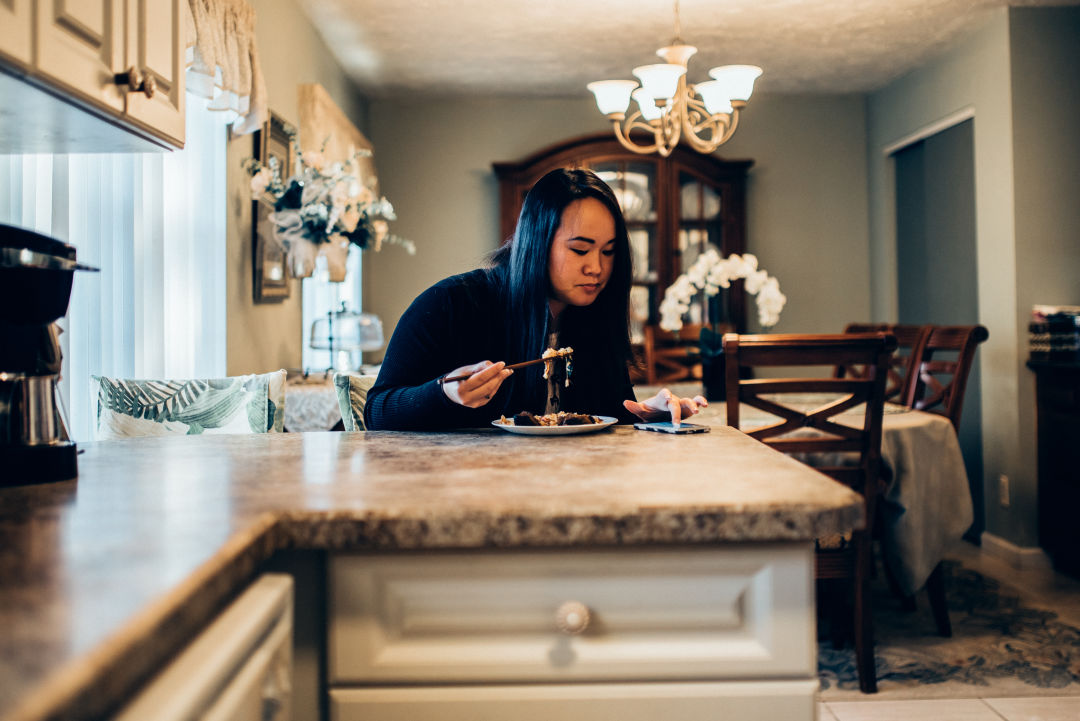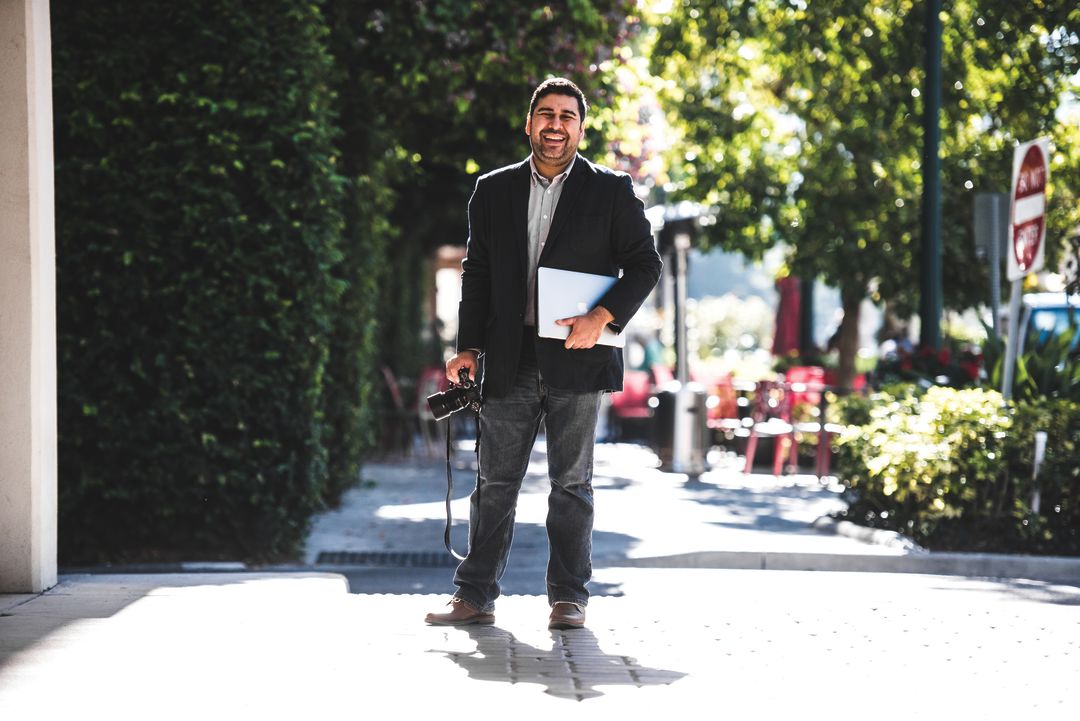
Why Millennials Struggle in Sarasota
It seems like everyone under 30 read it, and everyone had an opinion about it.
Shelby Webb’s “Why Millennials (Including Me) Are Leaving Sarasota,” published on the Sarasota Herald-Tribune’s youth-oriented blog, Unravel, last August, told a story familiar to anyone who’s lived in Sarasota during the past two decades. City leaders are hostile to boisterous bars, downtown festivals and live music, and their attitude is driving young people away.
At the time, Webb was a 25-year-old Herald-Tribune education reporter leaving for a bigger gig at the Houston Chronicle. Her angry kiss-off to her hometown took 20 minutes to write and drew an immediate reaction, much of it supportive.
“Amen,” went one Facebook comment. “So true,” another. Not all the responses were positive: “Maybe become a little more sophisticated than looking for skank bars to get drunk in.” Webb struck a nerve. The post became one of the site’s most-read stories of 2016.
Her complaints weren’t new. Neither were the questions that followed. Will things ever change for young people here? Can Sarasota ever become a hub for young talent?
Over the past few weeks, I’ve chatted with young teachers, waiters, cops, salespeople, bloggers and grad students. Some grew up here, some moved here, some moved away, some came back, some left for good. The stories they tell illustrate both the opportunities and the limitations they face. Many said they see a bright future here; others can’t wait to escape. Some would like to stay but can’t afford to.
The good news: Not all young people hate Sarasota. The bad news: The obstacles to keeping them here are bigger than most people realize.
Are young people fleeing Sarasota? The data is mixed. The percentage of Sarasota County residents between the ages of 20 and 34 has fluctuated only a bit in recent years, dropping from 12.9 percent in 2009 to 12.4 percent in 2012 then rising to 12.6 percent in 2015. School enrollment, one way to measure the presence of young families, dropped between 2007 and 2013 (growth slowed during the recession), but now it’s ticking back up.
We’re growing again—and at a rapid clip, with Sarasota and Manatee counties the 11th fastest growing region in the country—and quite a few young people are among those new arrivals. But we’re getting even more old people. In fact, the county’s median age rose from 50.7 in 2009 to 54 in 2015. Not only are more old people moving here; those already here are living longer. And births are actually declining. Population projections show the percentage of county residents 65 and older increasing from 33.2 percent in 2015 to 40 percent by 2035.
Young people aren’t taking over Sarasota. But they’re not all skipping town, either.
“I’ve always been all about Sarasota,” says Dustin Bell, a 26-year-old law enforcement officer born and raised here. If someone he’s dating is dead-set on moving away, he says, that’s a “dealbreaker.” Even in high school, Bell says, “I was never as bored as people claimed to be.” In Bell’s view, the city has some of the world’s best beaches, mild winters, bowling alleys, movie theaters, free Mondays at the Ringling Museum and much else to recommend it. A career that offers him an opportunity to steadily move up helps, too. “I’m probably the 1 percent of Sarasota that has a job that keeps me happy,” he says.
On the other hand, there’s Kelsey Sue Matheny, 24, who moved to Sarasota with her fiancé to be near his family in 2015. She’s eager to move away, in part because she prefers living near mountains, but also because she wants to be around more young people. “I need my own age group,” she says. After getting married, Matheny and her fiancé are leaving town ASAP.

Brittany Ortega, 30
“I’m not making the same money I made last season. So I took a second job. Even if there were more events, just finding the money to go to them is difficult with the cost of living on the rise."
Most people fall between the extremes. “I love it, but sometimes I hate it,” says Brittany Ortega, a 30-year-old manager at Clásico, the downtown restaurant and bar. She says the social scene in Sarasota is a “cycle” between the beach and bars, without enough affordable creative outlets for young people. “We want things to do,” she says. “I think that’s what’s making people leave.”
Webb herself insists she doesn’t “hate” Sarasota. “It’s a great town,” she says, just not for everybody. “If you’re between 1 and 18, Sarasota’s fine for you. If you’re 38 and over and already engaged or married it’s great for you.” In between those age ranges, not so much.
Jessica Flynn, a 26-year-old who works for a homebuilder, says she’s “grateful” to call Sarasota home. “I’ve always loved Sarasota,” she says. “I was never one of those antsy teenagers, saying, ‘Sarasota sucks.’” Flynn spent one semester in college in Virginia before moving back to finish her degree online. There’s plenty of fun stuff to do here, she says, from exploring the city’s improving food scene and hitting the beach at night to gathering around campfires out east. “I really don’t feel the apathy in my group of friends,” she says. “Everyone I know wants to have a job they love and wants to have a family. It’s not this, ‘There’s nothing out there for me.’ I don’t know anyone who thinks like that.”
But even Sarasota partisans sometimes struggle to live here. Underlying every discussion about young people’s future is one thing: money.
Rent and housing are a universal complaint. The average rent for a Sarasota two-bedroom unit that a recent grad might split with a friend rose from $1,650 in March 2016 to $1,975 in February; the median sale price of a home has surged from $147,000 in 2012 to $242,000 this year. Today, more than half of Sarasota County households earning between $30,351 and $48,550, prime young professional territory, are what housing analysts call “cost-burdened,” meaning they’re spending more than 30 percent of their income on housing. Eighty-two percent of those earning less than $30,351 are cost-burdened.
Bell is hunting for a new home, but based on prices, odds are he’ll have to move to Venice. “If you don’t have an inside deal, be it a friend in the family or you know someone in the realty business or construction, you’re struggling,” he says. Moving to Venice is a “heartbreaker,” but he thinks he might have to do it for a few years and then hope to move back.

Becca Chin-Yee, 29
"Sarasota is so expensive. That just speaks to its growth. People want to be here. I might have to bite the bullet and move to Bradenton."
Becca Chin-Yee, 29, returned to her native Sarasota in 2015 after spending nine years in Washington, D.C. Even with a career as a teacher at a private school, she’s living with her parents—as are 25 percent of all Americans ages 25 to 29. “It’s just so much cheaper,” she says. “It is so expensive to live in Sarasota, and I’m not going to Bradenton.”
Flynn was able to afford to purchase a home in 2015. “But what I could afford was just really, really crappy,” she says. “And I wasn’t asking for a palace. I was just asking for four walls and some air conditioning.” A majority of her friends rent homes, sharing them with three or four roommates. Flynn rents out one of her house’s two bedrooms.
Affordable housing has become a hot topic at government meetings and civic luncheons. Less discussed is the flip side of the affordability subject: low wages. The cost of housing is going up, but wages for young people aren’t.
American millennials are earning less than their parents did when they were young. When you adjust the numbers for inflation, Americans between the ages of 25 and 34 earned a little less than $825 a week in 1979. They earned just over $700 in 2013. The minimum wage has also decreased over time. After you adjust for inflation, minimum wage employees earned $10.90 in 1968. Florida’s minimum wage is $8.10. And minimum wage jobs are not just high school gigs. Almost 90 percent of minimum wage earners today are 20 and older.
Young people here earn less than their counterparts in much of the country. The median annual earnings for workers in Sarasota County is $28,317; the national number is $30,926. Webb says her cost of living in Houston now is comparable to what it was in Sarasota, but she gets paid much more. She calls Sarasota wages “absurd.”
In the metropolitan area stretching from North Port to Bradenton, the median hourly wage of all employees in 2015 was $14.84, below the state median of $15.29, itself below the national median of $17.40. And most jobs in Sarasota are in the low-paying service sector. Three of the region’s top job sectors pay wages less than the region’s median: office and administrative staff ($14.23 an hour), sales ($12.02) and food prep and service ($10.20).
Sometimes even those low-wage jobs aren’t easy to get. The unemployment rate for those ages 20-24 is 8.3 percent, compared to 4.8 percent overall and 3.5 percent for those 55 and older.

Eleni Sokos, 28
“One of my favorite concepts is that a city that’s good enough for an 8-year-old has got to be good enough for an 80-year-old, and that includes everything from accessibility and transportation to people wanting to play outside.”
Eleni Sokos, a 28-year-old Bradenton resident who works at Darwin Brewing Co. and runs a boutique marketing business on the side, says service workers—“bartenders, cooks, hairdressers, whatever”—are often left out of civic discussions that focus on “young professionals.” She says service workers feel “disenfranchised” when they’re ignored. “A huge and growing chunk of the population is underrepresented,” says Sokos.
In downtown Sarasota, residents, the majority of them retirees, have been a powerful voice for limiting special events and nightlife. Service industry workers are affected by those decisions, Ortega says. Her tips took a hit when the Thunder By the Bay festival left downtown in January for Lakewood Ranch. Sokos credits Bradenton leaders for welcoming special events. In contrast, “The Sarasota City Commission has proven that they are not interested in large-scale events that bring people downtown,” she says.
Urban design affects finances, too. While larger cities that attract young people tend to have mass transit and bicycle lanes, you need a car in Sarasota. Commuting from North Port—where homes are more affordable—to Sarasota costs $2,373 in fuel alone each year. Even commuting from Gulf Gate to downtown costs more than $140 a month, according to one commute cost calculator. Those numbers don’t include car payments. “If people don’t already have a car, that’s an inhibiting factor,” says Sokos.
Student debt also constricts young people’s finances. Nationwide, undergraduate tuition and fees at public universities have risen by 33 percent since 2004; total American student loan debt has also shot up, from $478 billion in 2006 to almost $1.3 trillion in 2015. Ortega is close to completing a bachelor’s degree but is wary about taking on more debt. She’d like to leave the “boring, repetitive” grind as a server but says she feels like she’s in “limbo,” unable to afford going back to school.

Daniel Campaña, 31
“If the preconceived notion about millennials is that there’s no opportunities here, the counter to that is you need to create your own opportunities. There’s a market for everything.”
Ambitious young people face another problem. Unless you work in a handful of fields like health care, real estate, law or financial services, you’re likely to hit a professional ceiling here. Daniel Campaña, 31, says it was “easy” to launch his own marketing and advertising company four years ago. “If you want to do something here, you can do it,” he says. But to keep his business growing, he may need to leave. “We’re pushing to other markets, because there are much better markets than Sarasota for our type of business,” he says. He’s currently contemplating a move to Atlanta.
Webb herself didn’t just pack up and ditch Sarasota. She left after she landed a great gig at a newspaper that serves a city with more than 2 million residents, many times Sarasota’s population.
Kevin Cooper, the 35-year-old president and CEO of the Greater Sarasota Chamber of Commerce, says our size hampers efforts to keep young people here. “There’s just certain things a metropolitan area of our size will not have,” Cooper says. For example, most talented students at Ringling College of Art and Design leave town after graduation. “If you want to design video games, there’s not a hotbed of video game design activity in Sarasota, Florida,” Cooper says. “You are training yourself for an opportunity that does not yet exist here.” Still, he notes, we do have “arts and culture and other natural amenities that larger communities would kill for.”
C4, a new consortium made up of Ringling College, New College, USF and State College of Florida, was created to brand the region as a higher education destination and build more opportunities for young people here. Laurey Stryker, who manages the collaboration, says the region is home to 15,000 students, with 3,000 new graduates each year. Student surveys conducted by C4 echo the concerns of young local workers. They want more opportunities to connect with other young people, affordable rentals and public transportation. C4 has developed programming that brings together students from across the campuses and has worked to alert local employers to the talent emerging from the colleges, but it’s just getting going. “We’ve got a lot of the bones,” Stryker says, “but how do we put some meat on it?”
Organizations like the Sarasota County and Manatee County young professionals groups encourage young people to get more involved in local government and advocate for issues that affect them. But let’s face it—it’s complicated. Many factors that affect whether young people can make it here—student debt, low wages—aren’t controlled by city and county commissions. And Sarasota’s economy has always been based on serving visitors and well-heeled retirees attracted by the quality of life, rather than providing job and lifestyle opportunities for ambitious young people.
Easing restrictive noise and entertainment regulations and seeking out young residents’ input in governance would be an excellent first step in attracting and keeping them, but it’s only a first step. Beyond that we’d have to improve public transportation and bike routes, build affordable apartments and diversify the economy. That would take leadership, civic will and a major investment of resources. Unless and until Sarasota decides it wants to do all that, many millennials will still have to choose between the beach and the sunshine and a great job somewhere else.